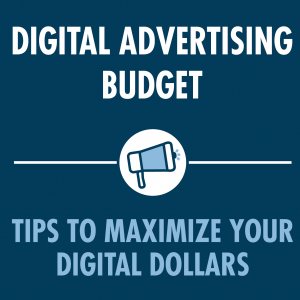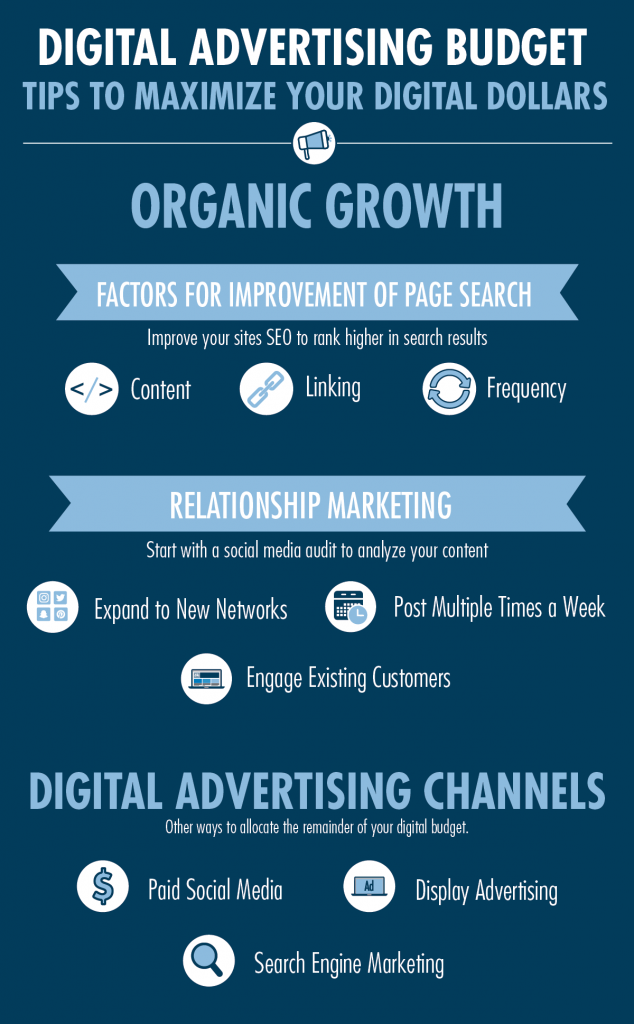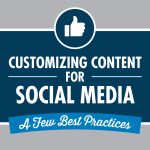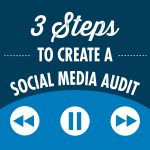
For most businesses, the question is not whether they should invest in digital marketing, but rather where should they allocate their resources. With this in mind, we wanted to outline some considerations when planning a digital advertising campaign.
Organic Growth
We look at organic growth as the potential of naturally occurring growth that is available through a strategy of optimization. Primarily, the growth is not at an additional cost, assuming the steps you are already taking can go further with the help of processes already in place, leading to natural organic growth. As an example, you may already have a website for your business, but does your website work well with Google? If so, you can begin to experience organic growth because Google can easily crawl and index your website and expose it to more customers. Now take that growth even further to make the most of your digital advertising dollars.
Search Engine Optimization (SEO)
An important component of any organic growth strategy is search engine optimization (SEO). Organic growth, in SEO terms, is a method used to obtain a high placement (or ranking) in an unpaid, algorithm-driven result of a given search engine. To ensure that this strategy is a success, it’s critical to have a website that is built to be easily found and crawled by search engines; essentially a mobile-optimized website that is easy to navigate with loads of valuable content. Think about the last time you Googled a product or service. Chances are you selected one of the top links on the first page, and not the second or sixteenth page of the search. By investing in your content, you are taking an essential step to prepare your website for the algorithms that Google, Bing, and Yahoo utilize to crawl and rank websites. Factors for improvement of search engine results include keyword phrases in your title and content, relevant incoming and outgoing links (PageRank), frequency of new content (and links), alt-tags for images, page metadata descriptions, social platform data and more. Knowing your industry and writing content that places you as an expert in your industry terminology, while associating those keywords with links to other industry experts is key to being recognized by search algorithms. Your first digital dollars should be spent on a website that is built to speak to search engines, then filling the site with relevant content, using terms that people may search to locate the goods or services your site features. SEO helps brands grow organically, making advertising much more effective in the long run.
Relationship Marketing
The next portion of your digital dollars can go a long way. Social media platforms have no initial cost to join or participate. If you’re only on one or two platforms, consider expanding your social presence to alternative social networks such as Twitter, Instagram, Pinterest or Snapchat. We recommend starting with a social media audit to analyze the content of your posts and ensure that the messaging is in line with your brand. To help social media growth, stay active and make sure you’re posting multiple times a week. Finally, use your existing customer base to your advantage. Engage them to write reviews about your company on social media and other review sites. Studies have shown that 91% of consumers read reviews before making a purchasing decision.
Digital Advertising Channels
To this point in the article, we have discussed the foundation for an effective digital advertising campaign. Once you have invested in SEO optimizations and set up your brand to grow organically, it’s time to focus on where to allocate the remainder of your digital budget. While there are many different solutions to consider, we have highlighted paid social media, search engine marketing, and display advertising.
Paid Social Media
It is estimated that 77% of the United States, or roughly 250.8 million people, have at least one social media account. With that type of reach, it’s no wonder why it is such a popular digital advertising platform. Brands generally don’t have to pay a lot for impressions either, making it even more enticing. In fact, Facebook Ads have one of the lowest cost per thousand impressions (CPM) of any digital channel. With the added ability to target audiences based on hobbies, location, income and more, social media advertising is a great choice for businesses looking to test the digital advertising space. With Facebook and other social platforms becoming more and more “pay to play”, we highly recommend B2C companies invest some part of their digital budgets on paid social media.
Search Engine Marketing
Search engine marketing is another cost-effective and user-friendly way for businesses to advertise online. One of its biggest benefits is that it can work in unison with your SEO strategy and allow you to focus on keywords that drive website traffic and conversions. All three major search engines (Google, Bing and Yahoo) offer their own advertising platforms, with Google Ads (formerly known as Google Adwords) dominating the category. It’s no surprise, either, as 90% of internet users turn to Google for their internet searches.
Generally speaking, search engine marketing provides the lowest new customer cost-per-acquisition due to the consumer’s purchase mindset. After all, they are searching for a product or service that lands them on your website. However, the more competition for a keyword, the more expensive it will be.
Display Advertising
While there are several different display networks on the market, for the purpose of this article we are going to divide them into Google Ads (Google Display Network) and programmatic platforms.
Display advertising is an extremely efficient form of digital marketing, using real-time data to target ideal consumer segments. Through e-learning, this channel is able to target when, where and how often you target consumers with your ads. This can be done by utilizing consumer data from mobile applications, location visitation and more. Where the two platforms diverge is the type of data that they use. Programmatic platforms utilize a mixture of 1st and 3rd party data collected from major data companies around the world where Google harnesses their own 1st party data.




